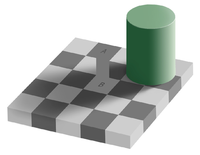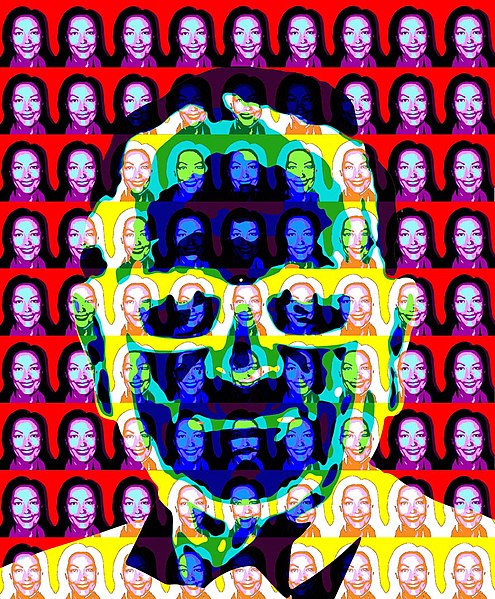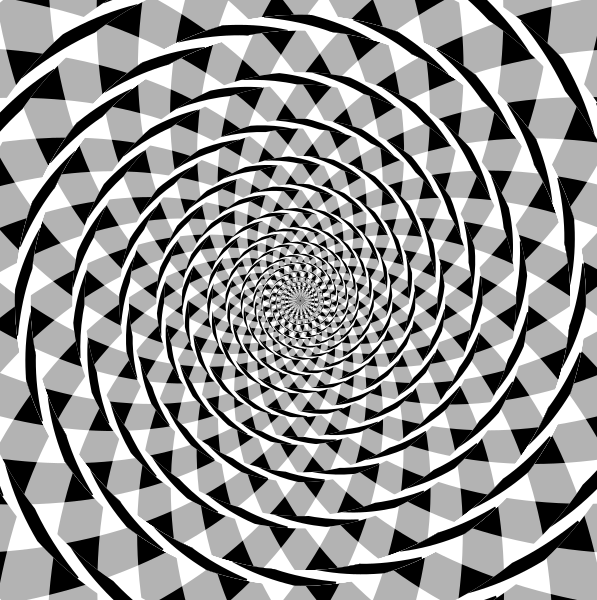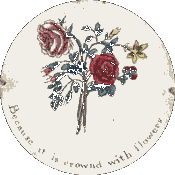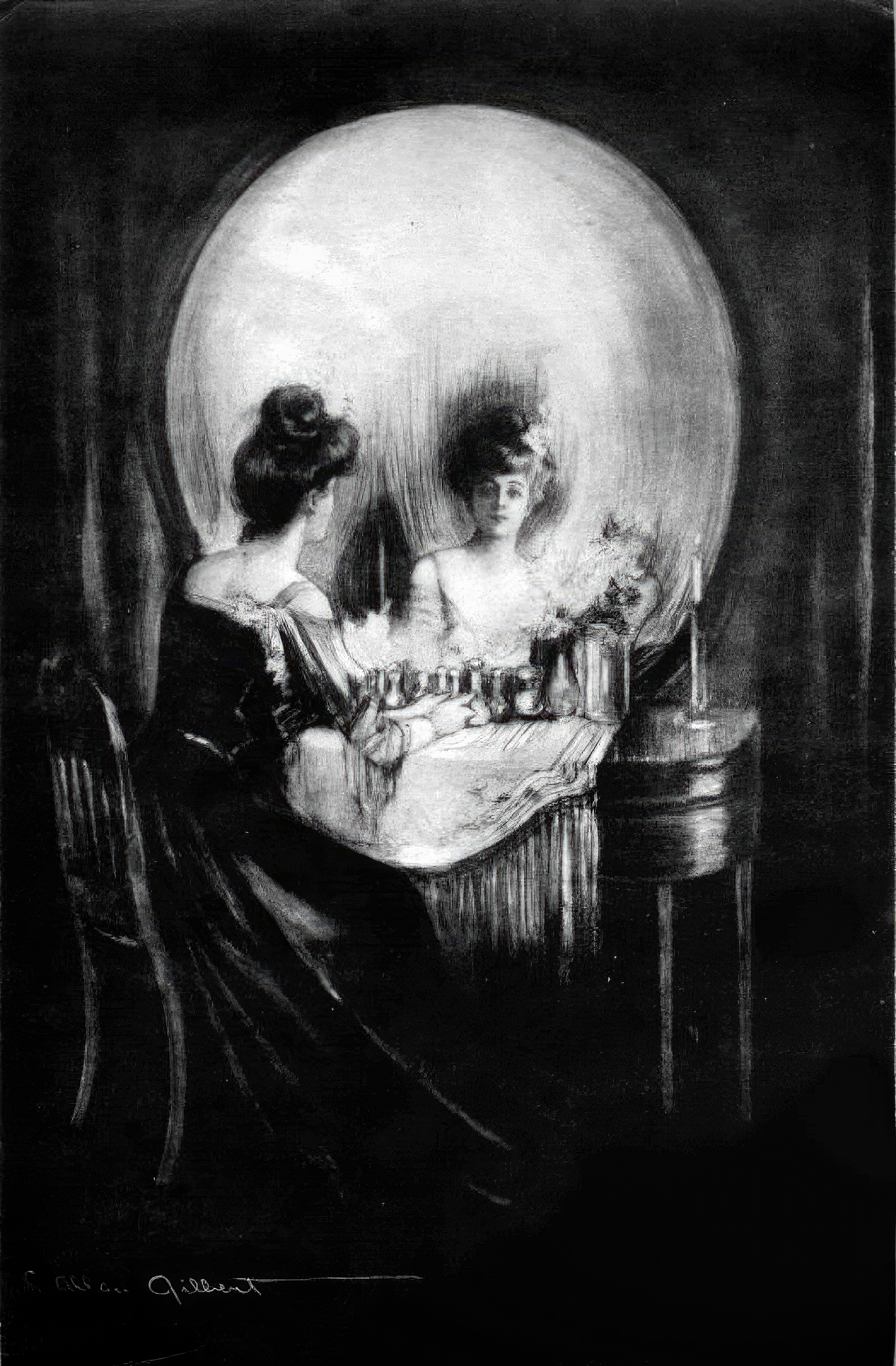The area labeled A appears to be a darker colour than the area labeled B, but it is not: they are the same colour.
Your brain makes adjustments for light and shadow. Your eyes "know" that the squares are the same colour, but your brain makes adjustments and compensations and tells you that B is in the shadow. So, in order to explain how both squares could be sending the same amount of light to your eye, your brain decides that B must be white.
Afterimages
Concentrate 30 seconds on the white dot and close your eyes for 10 seconds.
Afterimages are optical illusions which occur when the image continues to appear briefly after the image is no longer there. There are two types of afterimages:
1. Positive afterimage -The image retains the colours of the original image.
2. Negative afterimage - The colours may reverse like a photo negative.
Dimitri Parant
Café Wall
The café wall illusion: the horizontal lines are parallel, despite appearing to be at different angles to each other.
Fraser Spiral Illusion
This image appears to be a spiral of rope with twisted strands of two different colours. However, it is actually made up of concentric circles of twisted cords.
Thaumatrope
A disk with a picture of flowers on one side and a vase on the other is twirled very quickly by strings on each side and the pictures combine.
This picture of a women looking into a mirror, turns into a skull.
Autostereogram
An autostereogram is a type of 2D picture which when viewed in a certain manner appears 3D.
To look at an autostereogram, you must not focus on the picture, but kind of look through the picture as though you are looking from afar. Try not to blink or move your head too much. Then move back from the picture slowly. Repeat until a blurry 3D picture emerges.
Books To Read
Eye Benders: The Science of Seeing and Believing, by Clive Gifford.

